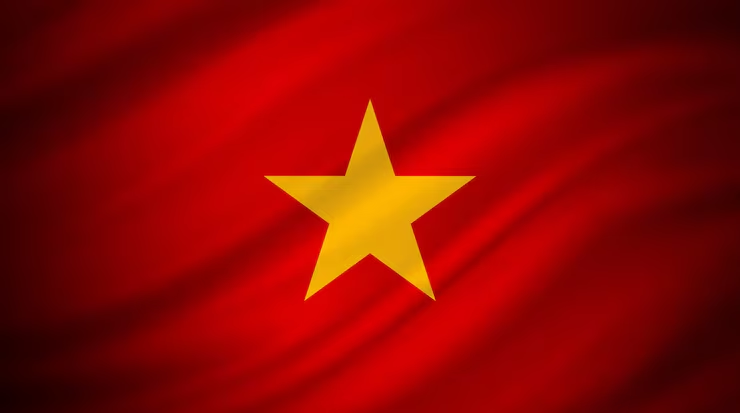In recent years, Brazil has quietly become a world leader in the growth of digital finance. Brazil has moved ahead of the curve with PIX, an instant payment platform backed by the central bank. This is because other countries have had trouble updating their old banking systems. Brazil is also quickly adopting open banking.
In this blog, we'll break down the main parts of Brazil's payment rails, look at how PIX works, compare TED and DOC transfers, and talk about how Brazil's open banking growth is changing the financial services industry in Latin America. To make payments go more smoothly, we'll also look at how international platforms like TransFi can work with this fast-changing ecosystem.
Understanding Brazil's Financial Infrastructure
Even though Latin America has one of the most advanced banking systems, a small number of powerful institutions have long controlled the market. Until the Central Bank of Brazil stepped in with strong digital and regulatory reforms, this led to high banking fees, complicated user interfaces, and a lack of new ideas.
Four main pillars support Brazil's financial system right now:
- PIX is the name of the system that lets you pay in real time.
- TED and DOC are the most common ways to send money through a bank.
- Fintechs and digital wallets are growing quickly in cities and the countryside.
- "Open banking" or "open finance" is the term for putting everything together in one place.
How PIX Works: Brazil's Top Real-Time Payment Company
PIX, which the Central Bank of Brazil launched in November 2020, changed the way people, businesses, and government organizations do business by allowing them to make payments instantly at any time, even on holidays.
To use Brazil's PIX payment system, users must register a PIX key, which can be their phone number, email address, or CPF tax ID.
- You don't need complicated account numbers because you can send money right away with just the key.
- Available through fintechs, digital wallets, and apps for mobile banking.
- Transactions that settle in real time usually take less than ten seconds.
More than 150 million Brazilians now use PIX. Digital wallets and real-time payments are now essential for everyday tasks in Brazil, such as getting paid, paying for coffee, and moving rent.
Also read: Philippines’ Payment Rails & How They Work – From InstaPay, PESONet to GCash, Maya & Real-Time Transfers
PIX Is Taking Over Old Rails in TED and DOC
Before PIX, Brazilians used DOC (Documento de Ordem de Crédito) and TED (Transferência Eletrônica Disponível) to send money electronically.
TED is usually used for bigger payments, and if you start it before the bank's cutoff time, you can send money on the same day. The money usually gets there in a few hours, and there is no set limit on how much can be sent.
DOC, on the other hand, takes care of smaller transactions, usually those under R$4,999. Funds sent through DOC usually arrive the next business day. Both services are less convenient because you can only use them during business hours and they often cost money.
People in Brazil still use TED and DOC, but not as much as they used to because PIX is faster, easier to get to, and cheaper. Brazil's old financial systems should know the differences between TED and DOC, but PIX is definitely the way of the future.
Brazil's Growth in Fintech and Open Banking
The Central Bank of Brazil started its open banking program in 2021. Now, it is working toward full open finance. This structured framework lets financial institutions safely share customer data with the customer's permission.
Brazil Open Banking is good because:
- It lets people quickly find better financial products by comparing offers.
- Fintechs can make smarter tools for budgeting, lending, and investing.
- Banks should lower their fees and come up with new ideas.
- It makes it easier for underserved users to get services, which helps with financial inclusion.
The end result is a system that is more open, competitive, and focused on customers. Brazil's open banking and fintech boom has made it possible for startups to build smarter services on top of the country's financial infrastructure.
Why Brazil's Digital Payments Are an Example for the Whole World
Brazil is a model for how to change the way money works today. This is why:
- More than 70% of people use digital banking.
- PIX handles transactions worth hundreds of billions of dollars every month.
- Street vendors, delivery drivers, and small businesses all accept PIX.
- The government is in favor of open finance, and rules don't get in the way of it.
A lot of people in Brazil use digital payments. People in both cities and rural areas are using their smartphones to send, receive, and manage money in real time. This shows how a central bank can help an efficient and fair system grow.
How TransFi Helps People All Over the World Use Brazil's Payment System
As they continue to grow, international companies, fintechs, and DAOs are looking for good ways to connect with Brazil's payment rails. TransFi can help with that.
TransFi: Connecting Brazil's Financial System to the Rest of the World
TransFi is a global platform that makes it easy and legal to make payments across borders. TransFi offers the following to businesses that work in Brazil:
- Payments to Brazilian bank accounts or wallets based on PIX.
- For older systems, TED and DOC transfers are available.
- Following Brazil's rules for open banking.
- APIs that are easy for developers to work with Brazil's payment systems.
- There is immediate settlement and automated reporting for digital payments.
TransFi quickly and safely links international funds to Brazil's financial system, whether you're handling payments to freelancers, payroll for people who work in other countries, or money transfers.
Conclusion
Brazil has gone from having an old, expensive banking system to having one of the most cutting-edge digital economies in the world. With the quick adoption of PIX, the end of TED and DOC, and the rise of open banking, the country is setting a global standard for financial infrastructure.
As open finance and real-time payments grow in Brazil, businesses around the world need to change. Platforms like TransFi make it possible to connect to this wave of new ideas with confidence, speed, and compliance.
Brazil's payment rails are a part of a global future, not just a tool for use in Brazil.
Frequently Asked Questions (FAQs)
1. How does PIX work in Brazil?
The Central Bank of Brazil created PIX, a payment system that lets you send money right away using basic information like an email address or phone number. It is quick, free, and available all the time.
2. What makes DOC different from TED in Brazil?
DOC is for smaller payments that happen the next day, usually less than R$4,999. TED is for bigger transfers that happen the same day and have no limit. Both often charge fees and are only open during banking hours.
3. What are the benefits of open banking for Brazilian customers?
Brazil Open Banking lets customers safely share their financial information with different banks and fintechs. This leads to better product recommendations, lower prices, and easier account switching.
4. Do people in Brazil often accept digital payments?
Yes, of course. In Brazil, digital payments, especially through PIX, are now common and accepted almost everywhere, from big stores to small, unofficial sellers.
5. How does TransFi make it easier to pay in Brazil?
TransFi makes it easy for international businesses to send money to Brazil through PIX, TED, or DOC. The money is sent quickly and safely, and it works with Brazil's open banking system
Table of Contents
Suggested Article
Explore our products

Make global payments at the speed of a click

Accept payments, remove borders.

Unlock Seamless Digital Currency Transactions Anywhere








.png)














